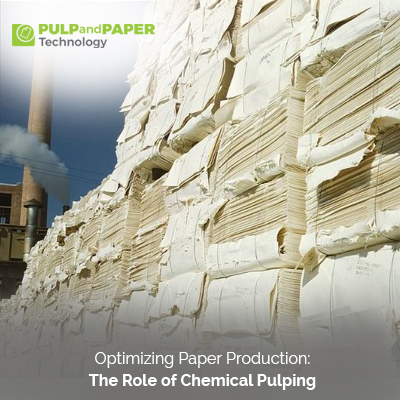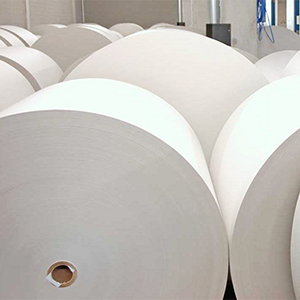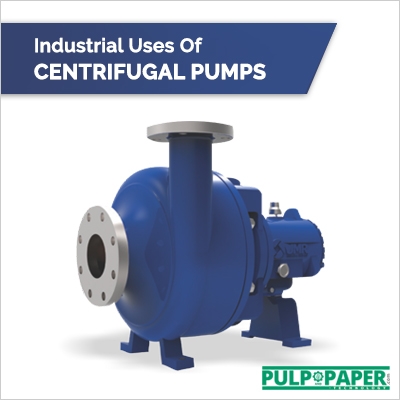Optimizing Paper Production: The Role of Chemical Pulping

In the realm of industrial processes, paper production stands as a vital pillar supporting modern society. From books to packaging materials, newspapers to sanitary tissues, paper products are integral to our daily lives. At the heart of this industry lies chemical pulping, a complex yet pivotal process in the journey from raw materials to finished paper goods.
I. Understanding Chemical Pulping
Chemical pulping is a sophisticated method for extracting pulp from wood fibers through chemical reactions. Unlike mechanical pulping, which involves physically grinding wood to produce pulp, chemical pulping aims to separate cellulose fibers by dissolving lignin, the natural adhesive that binds wood fibers together. This process results in high-quality pulp suitable for a wide range of paper products.
II. Types of Chemical Pulping
Kraft Pulping: This method, accounting for approximately 80% of global pulp production, uses a mixture of wood chips, sodium hydroxide (NaOH), and sodium sulfide (Na2S) under high temperature and pressure. The chemicals break down lignin, releasing cellulose fibers that form strong, versatile pulp used in packaging materials, printing papers, and more.
Sulfite Pulping: Employing bisulfites or sulfurous acid, sulfite pulping is known for producing bright and strong pulp, ideal for specialty papers like fine writing paper and tissue products. This process offers precise control over pulp properties, including brightness and strength.
Neutral Sulfite Semi-Chemical Pulping (NSSC): Combining mechanical and chemical processes, NSSC pulping softens wood fibers with sulfites before mechanical refining. This approach is favored for producing pulp used in corrugated boxes and paperboard, balancing strength and cost-effectiveness.
III. The Optimization Imperative
Optimizing chemical pulping processes is imperative for the paper industry due to several key reasons:
Efficiency Enhancement: Optimized processes streamline resource utilization, reduce energy consumption, and increase overall production capacity, contributing to operational efficiency.
Quality Enhancement: Fine-tuning pulping parameters leads to higher-quality pulp with desirable characteristics such as strength, brightness, and uniformity, meeting diverse market demands.
Environmental Responsibility: Optimization efforts focus on minimizing environmental impact by reducing chemical usage, water consumption, and emissions while ensuring regulatory compliance.
Cost-Effectiveness: Improved efficiency and product quality translate into cost savings, enhancing competitiveness and profitability for pulp and paper manufacturers.
IV. Key Optimization Strategies
Raw Material Selection: Choosing suitable wood species and quality is fundamental to achieving desired pulp characteristics. Variations in lignin content, fiber length, and chemical reactivity influence pulping outcomes.
Chemical Dosage and Recovery: Precise control of chemical dosages, including NaOH and Na2S in kraft pulping, optimizes pulp yield and quality while efficient recovery systems reduce chemical waste and environmental impact.
Temperature and Pressure Optimization: Fine-tuning pulping conditions, such as temperature and pressure profiles, influences reaction rates and pulp properties, balancing energy efficiency and pulp quality.
Pulp Bleaching Optimization: Post-pulping bleaching processes impact pulp brightness and cleanliness. Optimizing bleaching sequences and chemical usage enhances product aesthetics and market appeal.
Advanced Pulp Washing and Drying: Effective washing removes residual chemicals and impurities, while optimized drying processes reduce energy consumption and improve pulp strength and consistency.
Waste Management and Sustainability Practices: Implementing efficient waste management systems and embracing sustainable practices, such as utilizing renewable energy sources and recycling process byproducts, align with environmental goals and regulatory requirements.
V. Technological Advancements and Case Studies
Process Automation and Control Systems: Advanced automation and control systems monitor and adjust pulping parameters in real time, optimizing process efficiency and product quality. Case studies from leading pulp and paper companies demonstrate significant improvements in yield, energy efficiency, and product consistency through automation.
Digital Analytics and Predictive Maintenance: Data analytics tools analyze process data to identify optimization opportunities and predict equipment maintenance needs, reducing downtime and enhancing overall operational reliability.
Green Chemistry Innovations: Ongoing research in green chemistry focuses on developing eco-friendly pulping chemicals and processes, minimizing environmental impact without compromising pulp quality or production efficiency. Case studies showcase successful implementation of green chemistry solutions in commercial pulping operations, highlighting environmental and economic benefits.
Energy-Efficient Equipment and Energy Recovery Systems: Adoption of energy-efficient equipment designs, such as high-pressure boilers and heat exchangers, coupled with energy recovery systems, significantly reduces energy consumption and carbon footprint in pulping operations. Industry statistics reveal substantial energy savings and emission reductions achieved through these technologies.
VI. Industry Challenges and Future Outlook
While advancements in chemical pulping optimization have been substantial, several challenges persist:
Cost-Effective Technology Adoption: Balancing upfront investment costs with long-term benefits remains a challenge, especially for small and medium-sized pulp and paper mills.
Regulatory Compliance and Sustainability: Adapting to evolving environmental regulations and sustainability standards requires ongoing innovation and investment in green technologies and practices.
Market Demand and Product Diversification: Meeting diverse market demands for specialized paper products while optimizing production processes requires flexibility and agility in pulp and paper manufacturing.
Looking ahead, the future of chemical pulping optimization lies in continued collaboration among industry stakeholders, research institutions, and technology providers. Embracing digitalization, green chemistry innovations, and sustainable practices will drive continuous improvement and ensure a competitive and environmentally responsible paper industry.
Conclusion:
Chemical pulping optimization is a cornerstone of efficient and sustainable paper production. By leveraging advanced technologies, embracing green chemistry, and adopting sustainable practices, pulp and paper manufacturers can enhance efficiency, quality, and environmental responsibility. The journey towards optimized chemical pulping processes is a collaborative effort, driving innovation and shaping the future of the paper industry.









